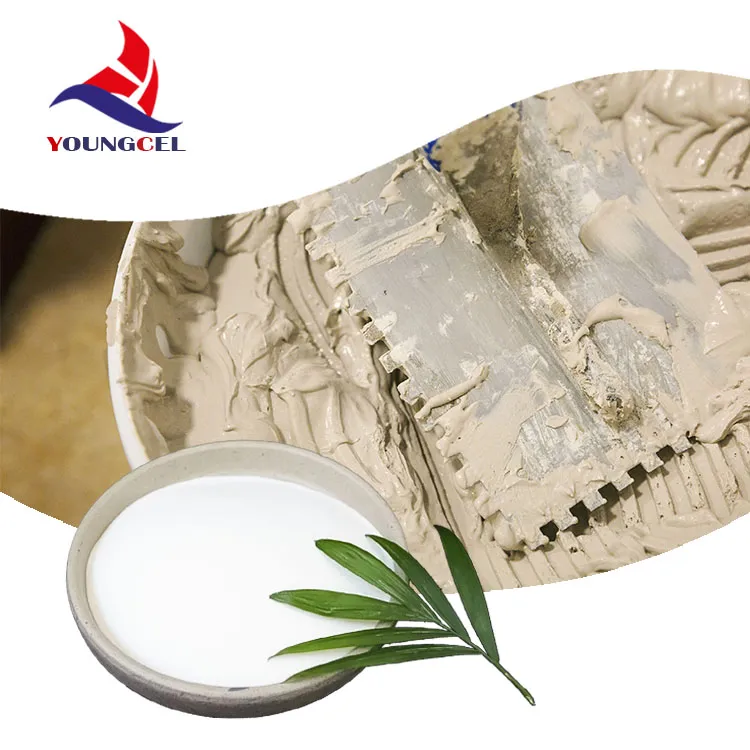The Role of Cellulose Ether in Wall Putty Formulations
Wall putty is a crucial material in the construction and decoration industry, providing a smooth and even surface on walls before painting or finishing. Among the various components used in wall putty, cellulose ether has emerged as a significant additive due to its unique properties and benefits. This article delves into the role of cellulose ether in wall putty, its types, functions, and the advantages it offers for both manufacturers and end-users.
What is Cellulose Ether?
Cellulose ether is a modified derivative of cellulose, which is a natural polymer found in plant cell walls. It is produced by chemically modifying cellulose to enhance its solubility in water and improve its functional properties. The most common types of cellulose ether used in wall putty include hydroxypropyl cellulose (HPC), carboxymethyl cellulose (CMC), and methyl cellulose (MC). Each of these variations brings distinct benefits to wall putty formulations.
Functions of Cellulose Ether in Wall Putty
1. Thickening Agent One of the primary roles of cellulose ether in wall putty is to act as a thickening agent. It increases the viscosity of the formulation, allowing for better application and handling. This property helps the putty maintain its consistency during mixing and application, preventing it from dripping or sagging on vertical surfaces.
2. Water Retention Cellulose ether has excellent water retention capabilities, which are essential for wall putty performance. By retaining moisture, it ensures that the putty remains workable for a more extended period, allowing for easier spreading and smoothing. This feature is particularly advantageous in hot or dry conditions, where rapid evaporation can compromise the effectiveness of the putty.
3. Improved Adhesion The inclusion of cellulose ether enhances the adhesion of wall putty to various substrates, including concrete, plaster, and masonry. This improved bonding reduces the likelihood of peeling or cracking after application, thus enhancing the longevity and durability of the finished surface.
4. Film-Forming Capability Cellulose ether contributes to the film-forming properties of wall putty. Once applied, it helps create a smooth, continuous film that provides a uniform surface. This aspect is vital for achieving a professional finish, as it ensures that the surface is ready for painting or additional decoration without the need for extensive sanding.
cellulose ether for wall putty

5. Control of Drying Time The water retention capabilities of cellulose ether also allow for better control over the drying time of wall putty. By regulating how quickly the moisture evaporates, manufacturers can formulate putties that are tailored to specific environmental conditions, thus improving the ease of application and overall performance.
Advantages of Using Cellulose Ether in Wall Putty
The incorporation of cellulose ether into wall putty formulations offers numerous advantages for both producers and consumers
- Enhanced Workability The improved viscosity and water retention characteristics ensure that the putty is easy to apply, making it user-friendly for both professional painters and DIY enthusiasts.
- Reduced Material Usage By enhancing adhesion and reducing the need for multiple applications, cellulose ether reduces overall material consumption, leading to cost savings for manufacturers and consumers alike.
- Consistency in Quality Cellulose ether helps achieve consistent quality and performance across different batches of wall putty, which is crucial for brand reputation in the competitive construction market.
- Eco-Friendliness As a natural polymer, cellulose ether is often considered a more environmentally friendly option compared to synthetic additives. Its biodegradable nature aligns with the growing demand for sustainable building materials.
Conclusion
In summary, cellulose ether plays a pivotal role in the formulation of wall putty, enhancing its performance characteristics and functionality. Its ability to act as a thickening agent, improve water retention, and strengthen adhesion makes it an invaluable component in creating high-quality wall finishes. As the construction industry continues to evolve, the adoption of cellulose ether in wall putty formulations will likely increase, further promoting efficiency and sustainability in building practices.
-
The Application and Significance of Construction RdpNewsMay.19,2025
-
Industrial Grade HpmcNewsMay.19,2025
-
Building Coating Adhesive Building Coating Adhesive HpmcNewsMay.19,2025
-
Application Of Hpmc For Detergent For Detergent In DetergentsNewsMay.19,2025
-
Application Of Hpmc Cellulose In Cement-Based MaterialsNewsMay.19,2025
-
Application Of High Quality Hpmc For Construction In The Field Of ConstructionNewsMay.19,2025




